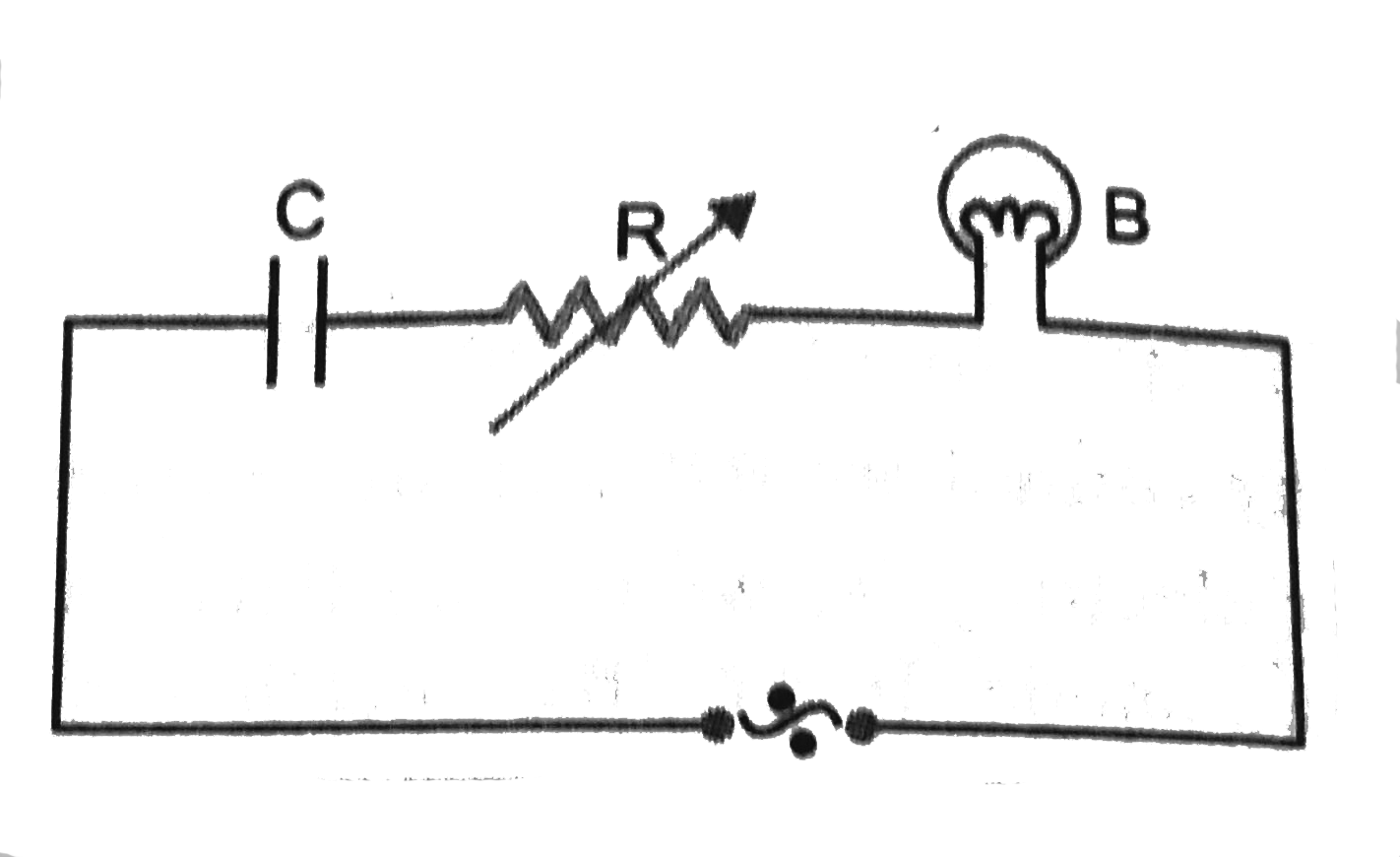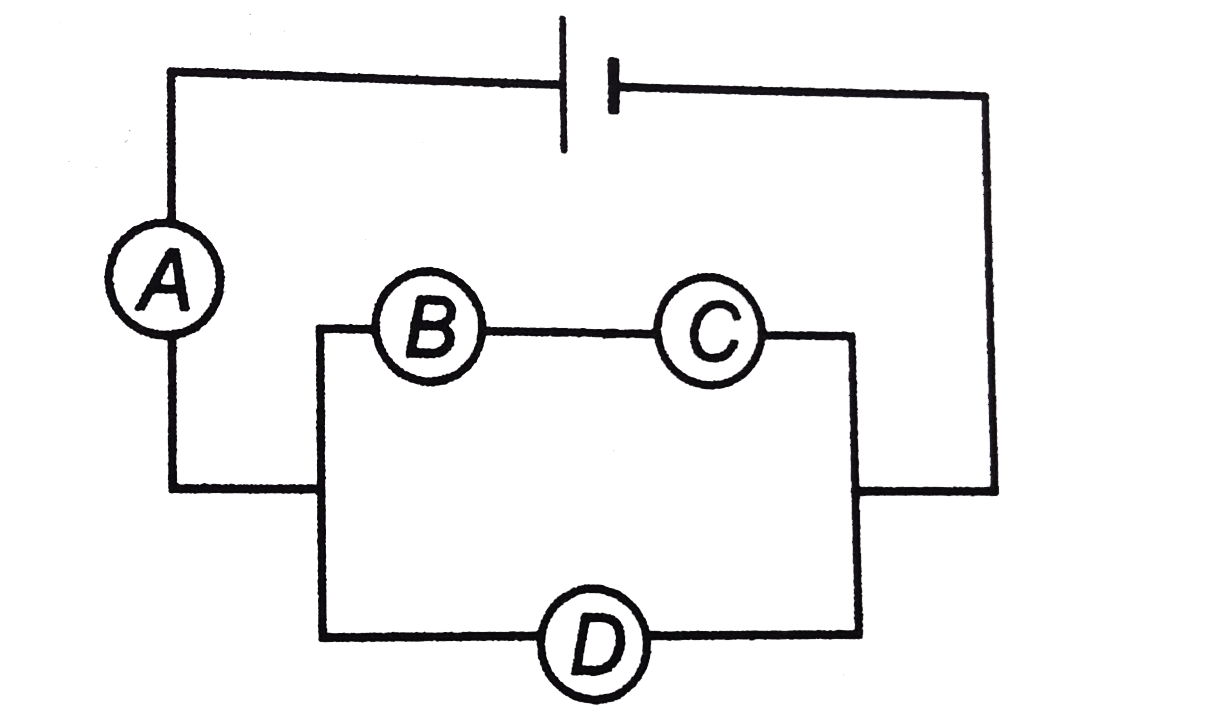A capacitor and an inductor are connected in two different ac circuits with a bulb glowing in each circuit. The bulb glows more brightly when :
the number of turns in the inductor is increased
the separation between the plates of the capacitor is increased
an iron is introduced into the inductor
a dielectric is introduced into the gap between the plates of the capacitor
To determine when the bulb glows more brightly in the circuits with a capacitor and an inductor, we need to analyze the effects of the given options on the voltage across the bulb in each circuit.
1. Understanding the Circuits:
- We have two circuits: one with a capacitor and one with an inductor, both connected to a bulb.
- The brightness of the bulb depends on the voltage across it. The higher the voltage, the brighter the bulb glows.
2. Analyzing the Options:
- Option 1: Increasing the number of turns in the inductor:
- Increasing the number of turns (N) in the inductor increases its inductance (L), which in turn increases the inductive reactance (XL = ωL).
- This means more voltage will drop across the inductor (VL), leaving less voltage for the bulb (V = Vs - VL). Hence, the bulb will glow dimmer.
- Option 2: Increasing the separation between the plates of the capacitor:
- Increasing the separation decreases the capacitance (C). The capacitive reactance (XC = 1/ωC) will increase.
- This results in a higher voltage across the capacitor (VC), leaving less voltage for the bulb (V = Vs - VC). Thus, the bulb will glow dimmer.
- Option 3: Introducing iron into the inductor:
- Adding iron increases the magnetic permeability, which increases the inductance (L) of the inductor.
- Similar to option 1, this increases the inductive reactance (XL), leading to a higher voltage drop across the inductor and a lower voltage across the bulb. Therefore, the bulb will glow dimmer.
- Option 4: Introducing a dielectric into the capacitor:
- Introducing a dielectric increases the capacitance (C). This decreases the capacitive reactance (XC).
- A lower XC means a lower voltage drop across the capacitor (VC), allowing more voltage to be across the bulb (V = Vs - VC). Hence, the bulb will glow brighter.
3. Conclusion:
- The bulb glows more brightly when a dielectric is introduced into the gap between the plates of the capacitor (Option 4).
Final Answer:
The bulb glows more brightly when a dielectric is introduced into the gap between the plates of the capacitor.
---
- We have two circuits: one with a capacitor and one with an inductor, both connected to a bulb.
- The brightness of the bulb depends on the voltage across it. The higher the voltage, the brighter the bulb glows.
- Option 1: Increasing the number of turns in the inductor:
- Increasing the number of turns (N) in the inductor increases its inductance (L), which in turn increases the inductive reactance (XL = ωL).
- This means more voltage will drop across the inductor (VL), leaving less voltage for the bulb (V = Vs - VL). Hence, the bulb will glow dimmer.
- Option 2: Increasing the separation between the plates of the capacitor:
- Increasing the separation decreases the capacitance (C). The capacitive reactance (XC = 1/ωC) will increase.
- This results in a higher voltage across the capacitor (VC), leaving less voltage for the bulb (V = Vs - VC). Thus, the bulb will glow dimmer.
- Adding iron increases the magnetic permeability, which increases the inductance (L) of the inductor.
- Similar to option 1, this increases the inductive reactance (XL), leading to a higher voltage drop across the inductor and a lower voltage across the bulb. Therefore, the bulb will glow dimmer.
- Introducing a dielectric increases the capacitance (C). This decreases the capacitive reactance (XC).
- A lower XC means a lower voltage drop across the capacitor (VC), allowing more voltage to be across the bulb (V = Vs - VC). Hence, the bulb will glow brighter.
- The bulb glows more brightly when a dielectric is introduced into the gap between the plates of the capacitor (Option 4).
The bulb glows more brightly when a dielectric is introduced into the gap between the plates of the capacitor.
Topper's Solved these Questions
- QUESTION PAPER 2022 TERM 1 SET 2BOOK - XII BOARDS PREVIOUS YEARCHAPTER - QUESTION PAPER 2022 TERM 1 SET 2EXERCISE - SECTION B
24 Videos
- QUESTION PAPER 2022 TERM 1 SET 2BOOK - XII BOARDS PREVIOUS YEARCHAPTER - QUESTION PAPER 2022 TERM 1 SET 2EXERCISE - SECTION C
6 Videos
- QUESTION PAPER 2022 TERM 1 SET 1BOOK - XII BOARDS PREVIOUS YEARCHAPTER - QUESTION PAPER 2022 TERM 1 SET 1EXERCISE - SECTION-C
6 Videos
- QUESTION PAPER 2023BOOK - XII BOARDS PREVIOUS YEARCHAPTER - QUESTION PAPER 2023EXERCISE - Question
43 Videos
Similar Questions
In which case, bulb glows in the circuit.


View SolutionA capacitor C, a variable resistor R and a bulb B are connected in series to the ac mains in circuits as shown if Fig. The bulb glows with some brightness. How will the glow of the bulb change if (i) a dielectric slab is introduced between the plates of the capacitor, keeping resistance T to be the same, (ii) the resistance R to be the same, (ii) the resistance R is increased keeping the same capacitance.

View Solution
Knowledge Check
In which of these circuits will the bulb glow?
A B
B C
C D
D
In which of the following circuits will the bulb glow
A B
B C
C Dnone of these
Dnone of theseAll bulbs in the circuit shown in figure are identical. Which bulb glows most brightly?
 ABBACDDC
ABBACDDC
Would the bulb glow in the circuit shown in figure ?

View SolutionA capacitor C, a variable resistor R and a bulb B are connected in series to the ac mains in circuits as shown if Fig. The bulb glows with some brightness. How will the glow of the bulb change if (i) a dielectric slab is introduced between the plates of the capacitor, keeping resistance T to be the same, (ii) the resistance R to be the same, (ii) the resistance R is increased keeping the same capacitance.

View SolutionWhen an electric bulb glows
View SolutionWould the bulb glow in the circuit shown in Fig. 12.15?

View SolutionIn which of the following circuits will the bulb or bulbs glow least bright ?
View Solution
